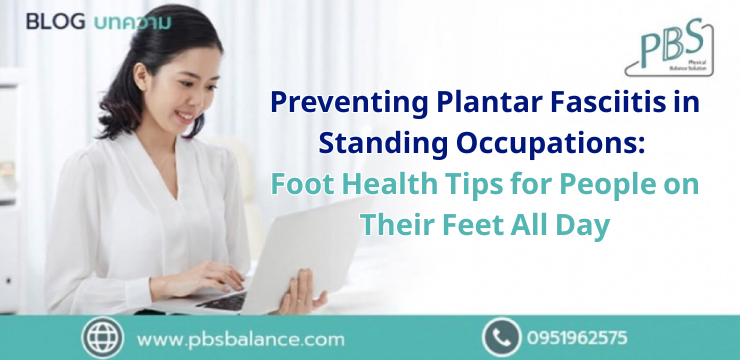
Everyone’s lifestyle and profession are different. While office workers may be prone to musculoskeletal issues such as “office syndrome,” those in occupations requiring prolonged standing—such as security guards, street vendors, retail associates, factory workers, teachers, and military personnel—are at higher risk for foot-related disorders, particularly plantar fasciitis. Understanding how to properly care for your feet can help prevent this condition and other chronic problems that can interfere with daily life.
Why Prolonged Standing Leads to Foot Health Problems
From an anatomical perspective, the primary function of the feet and plantar surface is to support body weight during standing and walking. However, when these structures are overused or subjected to excessive mechanical stress, their normal function may deteriorate prematurely. Without proactive care and adequate rest, cumulative strain on the foot’s soft tissues—such as fascia, tendons, muscles, and nerves—can lead to inflammation and chronic pain. Standing for long hours, especially in unsupportive footwear, can exacerbate this condition. Wearing high heels or poorly cushioned shoes increases pressure on the heel and plantar fascia, often resulting in microtears and repetitive strain injury, which, over time, may develop into plantar fasciitis—a painful and inflammatory condition of the plantar fascia.
How to Minimize the Risk of Plantar Fasciitis
Given that many jobs do not allow for prolonged sitting, preventative care is crucial, particularly for those unable to change the demands of their role. Here are some strategies to reduce the risk of developing plantar fasciitis:
- Take breaks whenever possible to sit and relieve pressure from the feet.
- Avoid high-impact leisure activities (e.g., running or excessive walking) on days when you’ve already been standing for long hours.
- Stretch the plantar fascia and calf muscles regularly to maintain flexibility and reduce fascial tightness.
- Massage the soles of your feet occasionally to stimulate circulation and reduce tension.
These simple habits can help preserve foot function and prevent painful inflammatory conditions.
When Symptoms Appear: Seek Timely Professional Support
If you’re already experiencing signs of plantar fasciitis, such as sharp heel pain when standing after rest, it’s important to seek professional guidance rather than endure ongoing discomfort. One recommended option is a consultation with foot specialists at PBS, where a comprehensive foot assessment can be performed.
At PBS, specialists provide:
- Gait and foot posture analysis
- Custom orthopedic insoles designed specifically to address plantar fasciitis and other foot deformities
- Personalized recommendations based on your occupational needs and foot anatomy
These custom foot orthotics, made using technology imported from the United States, are designed to fit seamlessly into your daily footwear and support the structural needs of your feet. Not only can they reduce pain and inflammation, but they also help prevent secondary complications such as joint degeneration, tendon overload, and postural imbalance.
If you continue to experience persistent foot pain despite trying all natural treatment methods, consult a specialist promptly. At PBS, our team of foot care specialists provides services including custom orthotic insoles for plantar fasciitis and corrective devices for foot alignment. These solutions are personalized to treat the root cause and deliver the best possible outcomes.
Facebook: PBSofficial.TH
Line Official: @pbs.official
Source